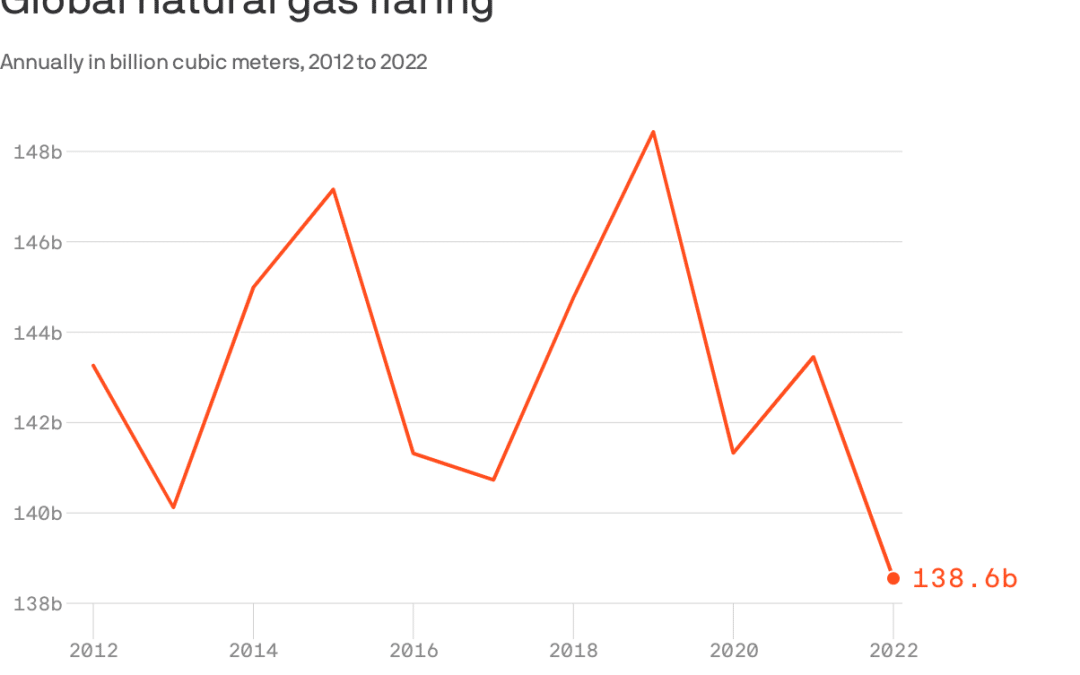The amount of natural gas flared — that is, burned off — at oil and gas sites dropped 3% last year even as crude output grew, a World Bank analysis finds, Ben writes.
Why it matters: The drop is a welcome sign, but researchers warn the problem remains large and persistent despite the progress.
The practice wastes gas and adds to greenhouse gas emissions.
One wild stat: “If put to productive purposes, the amount of gas flared in 2022 could generate as much electricity as Sub-Saharan Africa currently produces in a year,” a summary of the data notes.
How it works: The report tracks flaring at oil wells (which is the largest source), gas wells and liquefied natural gas plants.
CO2 accounts for most emissions from flaring, but the potent greenhouse gas methane is also released due to incomplete combustion.
Threat level: The “methane destruction efficiency” of flaring may be lower than once believed, the analysis warns.


